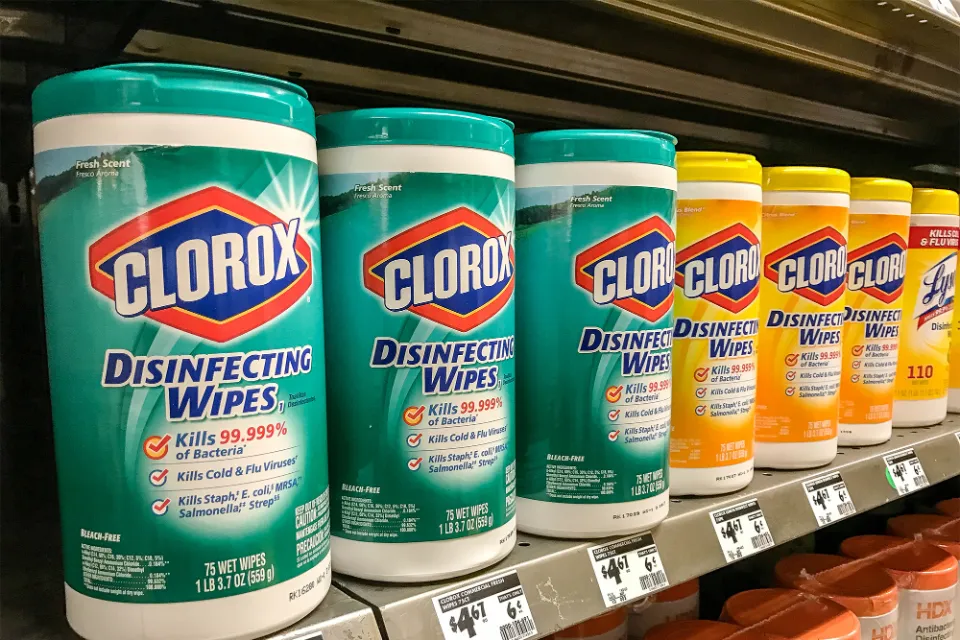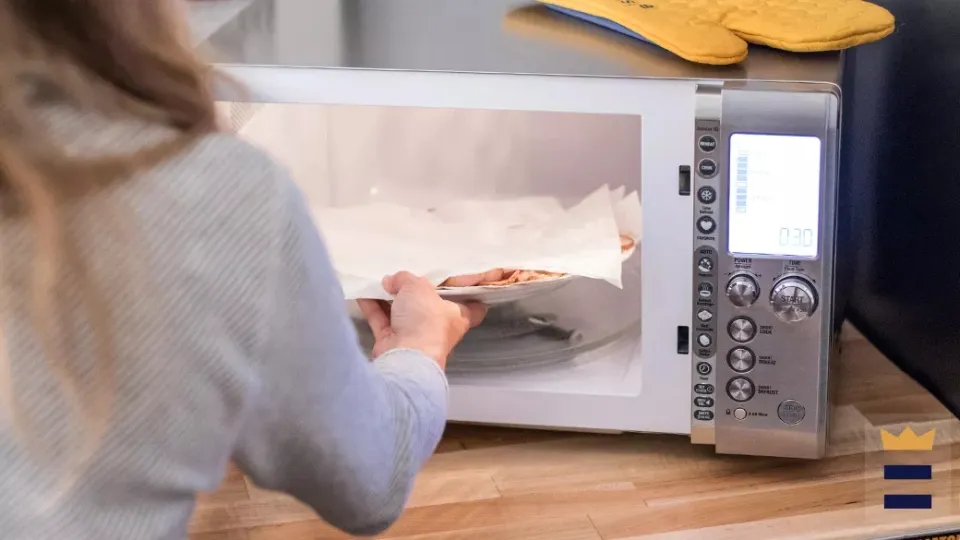Watching a movie while curled up on the couch? Is microwave popcorn bad for you? Find out whether this popular snack is healthy before you microwave your next bag of popcorn.
It turns out, most microwave popcorn comes with chemicals that are known to cause long-term health problems in humans. This article will examine what those particular chemicals are, after which we’ll examine the healthiest microwave popcorn and other (also delicious) substitutes.
Keep reading.
Is Microwave Popcorn Bad for You?
You either love or hate the strong aroma of microwave popcorn. But did you know that it might be poisonous?
An aromatic steam plume emerges when you pull on the hot microwave popcorn bag’s corners. According to a recent U.S. report, steam contains nearly four dozen chemicals; the sources include the buttery flavorings, the ink, and the glue on the bags. Ecological Protection Agency One of the chemicals is a known troublemaker, though it’s unclear how many of the chemicals might be dangerous at the levels emitted.
Diacetyl, the substance used to impart a buttery taste to the movie-time snack, made headlines last summer when a Colorado man contracted “popcorn lung”—a.k.a. bronchiolitis obliterans—a severe respiratory disease linked to breathing large amounts of the stuff. (The condition has been a problem for workers in popcorn manufacturing plants.) Despite the fact that diacetyl is present in a wide variety of foods, including red wine and Twinkies, it is safe to consume. The rub is that when heated to high temperatures, like those used to cook microwave popcorn, diacetyl vaporizes and becomes toxic.
The key to toxicity, as with most substances, is dosage. Over the course of more than ten years, it was claimed that the man consumed an average of two bags of extra-butter-flavored microwave popcorn each day, and—here’s the really shocking part—he hovered over the steaming-hot pouch to fully appreciate its buttery bouquet. The man was treated by Cecile Rose, MD, the program director for occupational medicine at the National Jewish Medical and Research Center in Denver, Colorado. “It is just a single case,” she says, “but I wouldn’t brush off this worry.”
The biggest producers of microwave popcorn in the nation, ConAgra, General Mills, American Pop Corn Company, and Pop Weaver, have taken note of this issue and stopped using diacetyl in their products, which also include Act II, Orville Redenbacher, Pop Secret, Pop Weaver, and Jolly Time.
As for the remaining chemicals in microwave popcorn, you can stay safe by taking the recommendations made by David Michaels, PhD, director of the Project on Scientific Knowledge and Public Policy at the George Washington University School of Public Health and Health Services, an expert on microwave popcorn fumes: wait until the bag is cool to the touch before opening (the vapor will condense), and open the bag under a stovetop exhaust fan.
According to Michaels, the best solution is to make your popcorn the conventional way—on the stovetop.
It might be time to learn how to clean a microwave if you’ve ever opened your microwave to warm up a late-night snack only to find splatters and grime inside. You are supposed to clean a microwave by using Baking Soda, Lemon, Dish Soap, Vinegar and Water, and Melamine Foam Sponges.
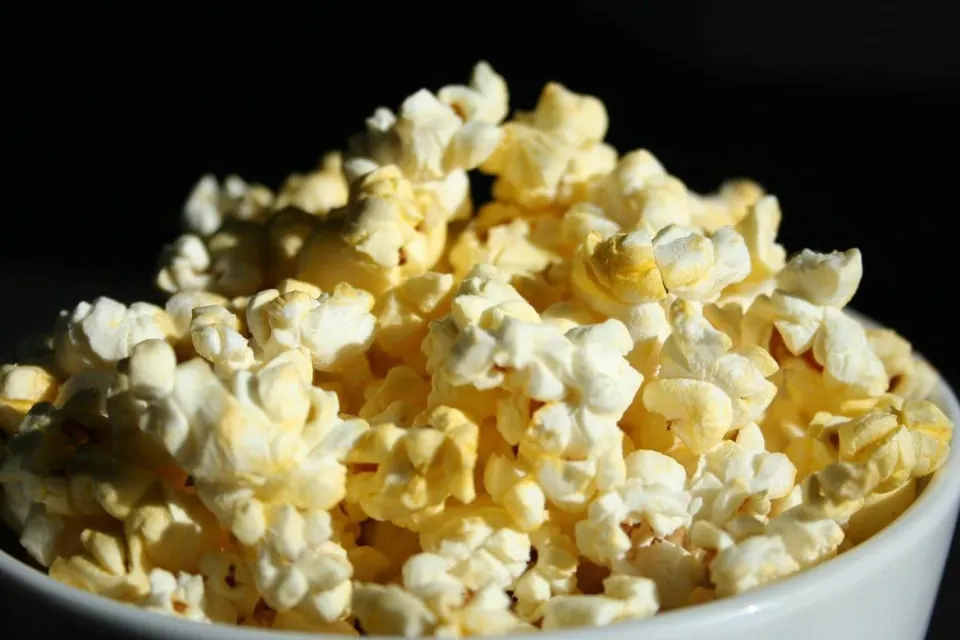
Does Microwave Popcorn Cause Health Problems?
We are aware that many microwave popcorn brands contain the hazardous compound PFAS, but what about other hazardous substances? Let’s look at one other very common microwave popcorn additive: diacetyl.
Diacetyl
Diacetyl, an artificial flavor that gives microwave popcorn its distinctively buttery flavor, is another component that should raise serious safety concerns. Diacetyl is also found in other goods like margarine, baked goods, candy, e-cigarettes, and even pet food.
Diacetyl’s problems first became known when they were found to cause severe respiratory disease (obliterative bronchiolitis, also known as “popcorn lung“) in employees who worked in microwave popcorn and food-flavoring factories.
Later, diacetyl was also discovered to be associated with Alzheimer’s disease. As it turns out, diacetyl can lead to an increase in something called “beta-amyloid clumping.” Amyloid plaques, which are toxic to nerve cells and a telltale sign of Alzheimer’s disease, are created when amyloid proteins congregate in the brain.
Furthermore, it was discovered that diacetyl reduced the effects of glyoxalase I, a protein that defends nerve cells. Thus, diacytel has the potential to harm the brain while also impeding some of its defense mechanisms.
Around 2007, most large microwave popcorn manufacturers stopped using diacetyl, but unfortunately, they just replaced it with a chemical that’s also a known toxin called 2,3-pentanedione. The only significant structural difference between the two chemicals is that the U.S. A slightly higher recommended exposure limit (REL) for 2,3-pentanedione has been established by the Department of Labor.
Can you boil water in a microwave? Yes, with the right timing, water can boil in a microwave. However, take care to prevent burning and overheating.
TBHQ
Tertiary Butylhydroquinone (tBHQ) is a preservative that’s found in some microwave popcorn brands (such as Act II) that is made from butane, a toxic gas. It has been discovered to be connected to a number of conditions, including cancer, ADHD, weakened immune system, and more.
If you adhere to the instructions, mounting your microwave under a cabinet or on a shelf can significantly reduce the amount of counter space needed. To begin with, you are supposed to prepare equipment and tools. Below are the quick steps on How to Install a Microwave:
Pesticides
Then, of course, there are the herbicides and pesticides that are used to grow most conventional popcorn. Depending on the specific type(s) of pesticides used, the degree of toxicity varies greatly, but it’s generally wise to buy organic whenever possible.
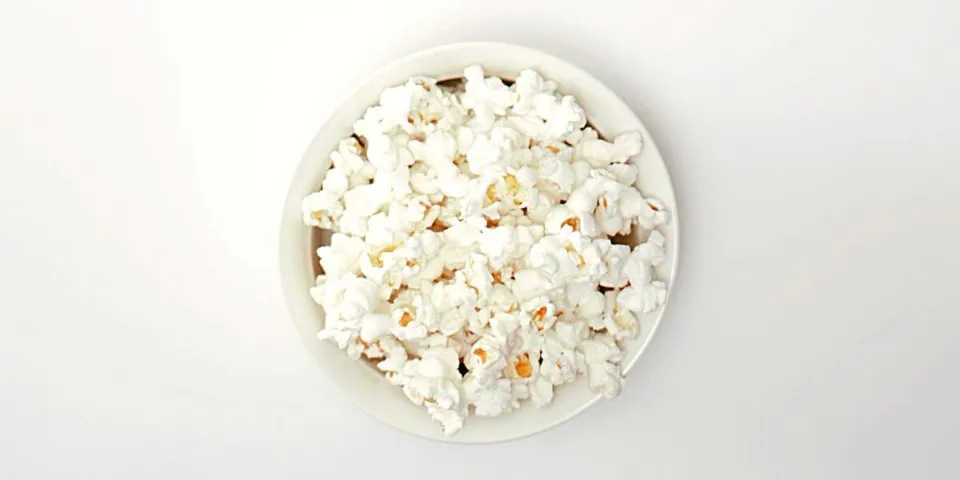
Is There a Microwave Popcorn Without Chemicals?
So now that we’ve gone through all of the problematic chemicals that are often found in microwave popcorn, you’re probably wondering: is there any microwave popcorn that’s safe!? Exists microwave popcorn that is chemical-free?
Yes! So far, we’ve found two brands of microwave popcorn that boast chemical-free bags:
Skinny Pop
Skinny Pop’s microwave popcorn is not organic (although they do have an organic bagged version), but it is one of the safest brands of microwave popcorn in terms of the chemicals and packaging. Their “chemical-free bag” has no PFAS, and it also contains NO diacetyl. Skinny Pop’s microwave popcorn comes in two flavors: Sea Salt and (non-dairy) Butter. Here are the ingredients:
Sea Salt: Popcorn, Sunflower Oil, Palm Oil, and Sea Salt
Butter: Popcorn, Sunflower Oil, Palm Oil, Sea Salt, Natural Non-Dairy Butter Flavor, and Lactic Acid
Black Jewell
Black Jewell’s corn is grown, harvested, and packaged in the U.S.A. on family farms. It comes in “chemical-free bags” in several different varieties:
No salt/No oil: Popcorn is the only ingredient
Natural: Popcorn, palm oil, sea salt
Touch of Butter: Popcorn, palm oil, sea salt, natural butter flavor, beta carotene
Sweet & Salty: Popcorn, palm oil, sea salt, rebaudioside a
Simply Sea Salt: Popcorn, palm oil, sea salt
Walmart and their website both sell Black Jewell.
With other brands, it is practically impossible to determine whether something is truly chemical-free. Even if the ingredient label is “clean” of potentially toxic ingredients, there is almost no way of knowing the truth about what the packaging is lined with.
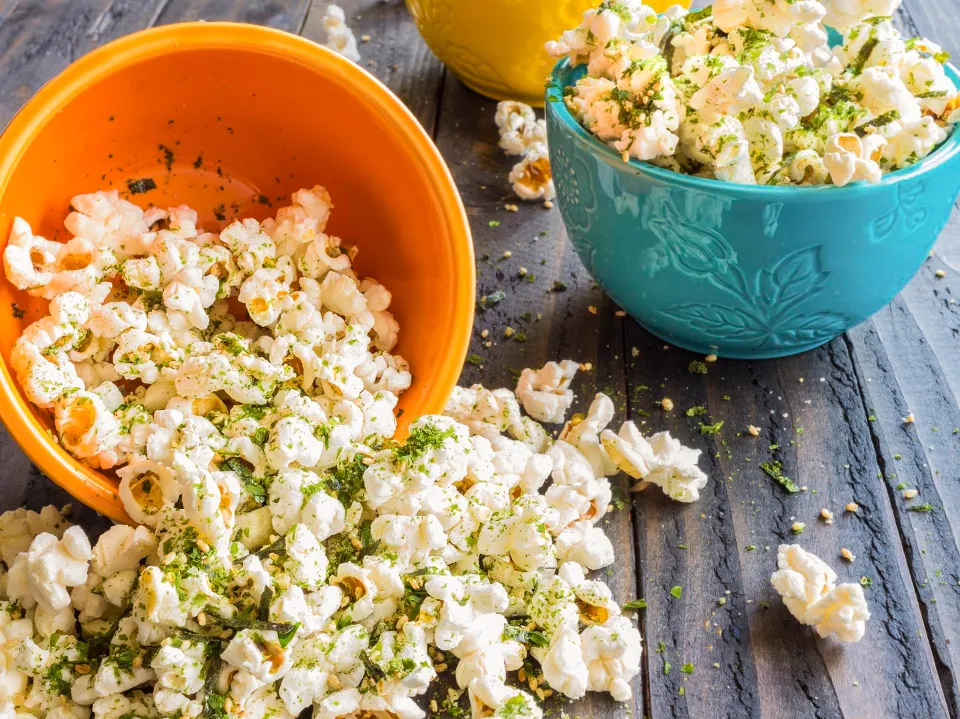
FAQs
Is Microwave Popcorn Bad for Weight Loss?
Because of popcorn’s high fiber content, its low calorie count and its low energy density, popcorn is considered to be a food that can aid in weight loss. For instance, research has shown that compared to potato chips, popcorn has more filling calories.
Can I Eat Microwave Popcorn Everyday?
You may be consuming excessive amounts of extra salt and calories, as well as potentially harmful chemicals and artificial ingredients, if you consume microwave popcorn or movie theater popcorn every day. However, homemade popcorn that’s made with olive or avocado oil can be a healthy addition to your daily diet.
Is Air Popped Popcorn Healthier Than Microwave?
Yes, popcorn is fun, but it’s also healthy. Popcorn is a whole grain and a good source of fiber. Furthermore, there are only about 95 calories in 3 cups of plain, air-popped popcorn. Use an air popper or the microwave to cook your corn for the healthiest results.
Is Popcorn Junk Food Or Not?
Popcorn is frequently mistaken for junk food, but with the right preparation, it can be a healthy snack. Many people use popcorn as a healthy alternative to high-calorie snacks because it is high in fiber, vitamins, and minerals.
Summary: is Microwave Popcorn Bad for You?
Be aware that the flavorings added to microwave popcorn can quickly add up in fat, calories, and sodium despite being a convenient option for a tasty snack. Most companies use simple ingredients but the check labels of your favorite brands. Make your own when all else fails!
If you have any questions, please leave a comment. My Prime Home tries to give you the best home improvement information. Don’t forget to share the post. Thank you for reading.


